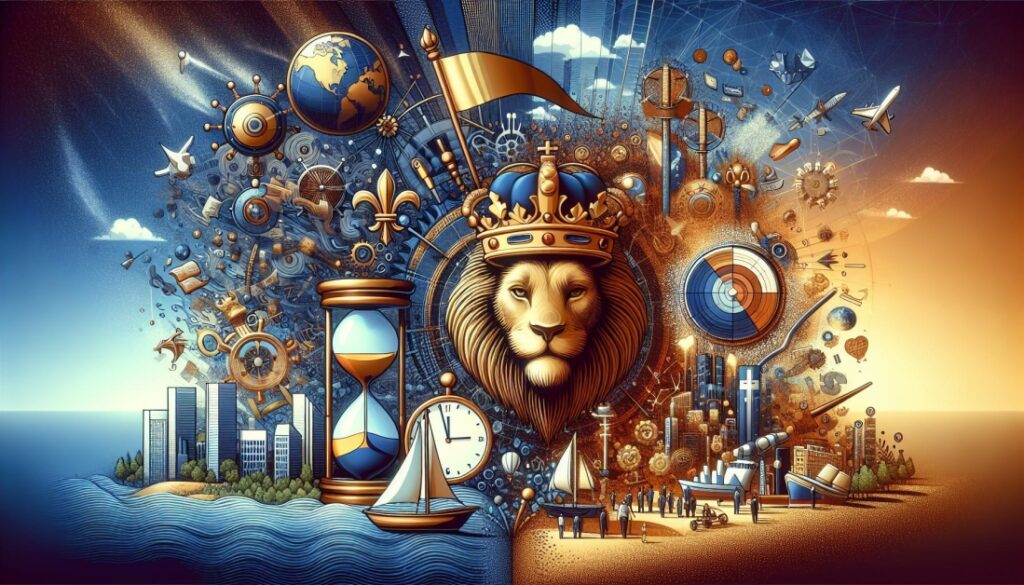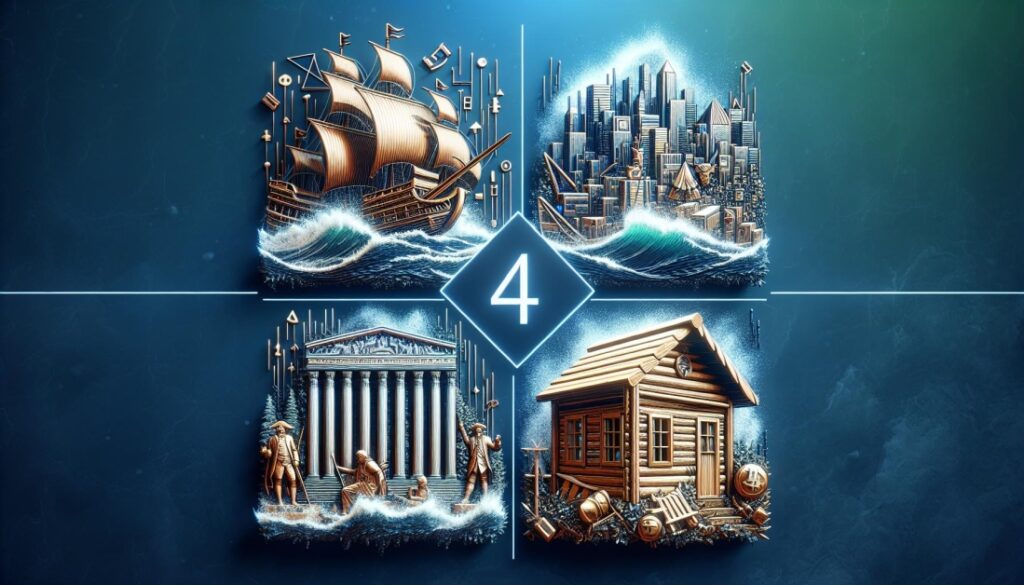Exciting the Masses: How Entertainment Is Making Web3 Mainstream

A recent Coinbase Institute report shows that there is a growing gap between those who know about Web3 and those who actively use it. A survey of more than 32,000 people in 16 countries found that while the majority were familiar with blockchain or crypto technology, they did not use Web3 services due to a lack of technical knowledge or because they didn’t know where to start.
Chris Jacquemin told AskFX that it’s one thing for someone to jump into Web3 without research. It’s one thing to jump into Web3 after doing some research, but quite another to jump in slowly and feel like you’ve got the basics right. Mainstream acceptance is likely to look less conscious and more technology-driven.
Web3 is currently facing a fundamental problem: although blockchain advocates, aka “crypto natives”, often joke that they are in an echo chamber and that the barriers to entry are high, they effectively keep curious minds away. Adopting new technology can be an intimidating and cumbersome process for the average person. Web3 education is a big problem for consumers and developers. The number of active wallets has decreased across all crypto sectors.
In its survey, the Coinbase Institute indicated that Web3 adoption will increase by 50% over the next three years. How will this happen?
The entertainment industry is best positioned to implement Web3 and attract the masses.
Storytelling is a powerful way to connect with people
Good conversation is human. Visual media can remind us of our humanity even as the digital world becomes increasingly artificial and isolating.
A film based on popular NFT characters will be released in collaboration with Web3 community NounsDAO and independent Web3 creative network Atrium. The history of the origin of the nouns is a pure Web3 history. The Nouns Collection is open source. That means anyone can use it to create anything they want. The NounsDAO approved a funding proposal for the project. It will provide its producers with $2.75 million from the NounsDAO’s coffers.
Joshua Fisher, founder of NounsDAO offshoot SharkDAO, told AskFX that the NFT project, which publishes a Noun NFT every day, is growing in popularity because of its art style. According to OpenSea, this project has a current minimum price of 35 ETH, which is about $63,500, and according to OpenSea, over 17,684 Ethereum (about $32,000,000) have been traded.
Fisher said, “The storytelling and style just works.” You don’t know why, but if you’ve seen something for years and it continues to be popular, chances are you’ve added a little fuel to the fire . it will burn
Supriyo, the founder and CEO of Atrium and creative director of Nouns: A Movie, told AskFX how Web3 transformed the way media interacted with their audience and created new opportunities for engagement.
He said titles could be tied to rewards for fan participation. He said fans could be offered the opportunity to create commemorative NFTs, enter a raffle to win a cameo on a TV show, or donate to the Writer’s Room.
NounsDAO deals with entertainment from all angles and creates an entire ecosystem with its recognizable characters. The group also voted to create a comic book series in partnership with Titan Comics and NFT community ComicsDAO, and approved an earlier proposal for a short film, “Welcome To Nountown.”
Adam Fortier is a comics industry veteran, founder of ComicsDAO and a comic book series Nouns Comic. He said the blockchain integration in Nouns Comic allows for better provenance and tracking, which is beneficial for both creators.
He explained, “With comics, the customer base is everything.” “But there are silent customers who will buy anything you do and stick with them.” They never sell, so you never hear from them. But Web3 allows you to track and reward those who do.
Web3 technology has been integrated with other visual media projects to provide viewers with rich and interactive experiences. Mila Kunis raised money with NFTs for an animated series called Stoner Cats, and Dan Harmon of Rick and Morty is developing Krapopolis, a network TV series that will allow NFT owners to vote on elements of the show . Toonstar, a Web3 studio, has created an NFTs-backed animated series called Space Junk, starring Napoleon Dynamite actor Jon Heder. The show invites NFT holders to participate in history and create stories for the characters they represent.
Roy said, “We try to create stories that people fall in love with.”
Jacquemin’s agency, which has signed over 50 Web3 creators, including Krista Silver and AI artist Claire Silver, sees commonalities between all talent represented by WME in film, music and television, as well as comedy, books and art.
He said that creativity and storytelling were the two words he used to describe his thoughts. “I think there is a strong connection between our clients’ creative skills and storytelling skills.”
Web3 evangelism is a talent-based approach.
Blockchain tools not only help to tell more compelling and interesting stories, but also encourage new talent to leave more traditional realms and join Web3.
Roy explained that when building a collective of creatives, talent from traditional media companies like Pixar Marvel and Netflix are attracted to Web3 as it offers more creative freedom and new access and tools.
He said that Nouns changed the way funds are raised and used for creative projects.
Fisher said that Web3 has created its own media environment with competitive compensation, less structure and corporate oversight that rivals the big studios. Either the pay has to be the same, the work is easier or less stressful than producing content for large corporations. You need the approval of someone who has probably never created anything. It’s not easy to get approval from someone who has never done anything themselves.
Roy says Atrium has managed to attract a range of top talent, motivated by the promise of a creator-centric economy that gives artists more ownership and opportunities to monetize their work.
He said: “You don’t want to be a footnote in a big production.” “The sense of accomplishment and autonomy that comes with it is second to none.”
With Web3, artists can be supported from the start by claiming their ideas and making them public and present invariably.
Fisher explained that “with every decentralized blockchain you have the opportunity to immortalize your idea in the sand forever, for all eternity”. Fisher said, “I think if something is universally popular, the community will reward the creator with flowers.”
Jacquemin said that crypto-native talent understands the emerging Web3 cultures that are emerging on social media platforms like Twitter be built and are able to deeply connect with their fans in new ways.
He said that NFTs are used as profile pictures (PFPs) to indicate identity and affiliation. There’s a certain uniqueness to this, but it’s similar to creating a TV show or movie based on a comic book in that you’re essentially creating an entire character universe.
He added, “People can follow these personas if they like what they advocate or represent, the visual or audio work they do, or their thought leadership.”
Celebrities flock to NFT projects like CryptoPunks or Bored Ape Yacht Club to create their online identity. Rappers Eminem, Snoop Dogg and others used their BAYC avatars to appear in a music video that premiered during the MTV VMAs.
Going “stealth mode”
Web3 tools are a great way for many developers to naturally and organically enhance their entertainment.
Roy explained, “I think there’s an opportunity to build fandom in a more interesting way with the new Web3 tools. The layer will be invisible and more individual. This can really build some unique user experiences.” “Let’s say you’re watching something. Maybe you’ll be rewarded for sharing it with friends, or for answering quizzes that can only be answered by watching. With Crypto, you can build these things on the basis of ownership and composable stack.”
Silverman stated that when it comes to new technology, people tend to focus on technical jargon and not on the bottom line or the user experience. “I think the more tools there are that enable necessary and proper forms of interaction, the less people focus on the terminology.”
Jacquemin explained that this “stealth use” of Web3 tools could help skeptical talent to adapt Getting used to Web3.
He said that the initial friction between Web2 clients and Web3 tools felt like learning a new language. “Instead, we need to look at existing aspects of our customers’ businesses that could be reimagined with a Web3 component without causing friction in the user experience.
Web3 native talent can also find ways to connect more closely with traditional Web2 brands and mainstream consumers by making Web3 offerings more available.
Jacquemin explained that “the individual data that can be collected transparently is of higher or lower quality.”
The path forward
Although the term “Web3” is better known, the concept has had difficulties, to bind the audience. In our age of information overload, attention is drawn to newer technologies such as artificial intelligence.
Visual media entertainment is still a multi-billion dollar business. The global visual content market will grow by $1.4 billion by 2026. Americans use digital media more than 13 hours a day on average. New platforms and gadgets continue to be developed to provide an even more immersive experience. The average US household has an average of 11 connected devices, seven of which have a screen.
No matter how much we resent it, the need for entertainment and visual stimulation is still a driving force in our economy. Warner Bros. Netflix, Sony, Paramount and Village Roadshow are just some of the big players that have started experimenting with Web3 tools.
Silverman said, “I think there’s still so much to discover in terms of film and television in terms of Web3.”
Entertainment giants, talent agents and creative networks are constantly finding new ways to organically integrate Web3 it by creating extensive NFT ecosystems or integrating crypto payments into existing models. Consumers will embrace a digital future based not on imaginative technology but on immersive experiences.
Fortier said that there is no need to mention that it is a Web3 or crypto project. You might say, ‘Here’s this animation.’ Like it?’”





